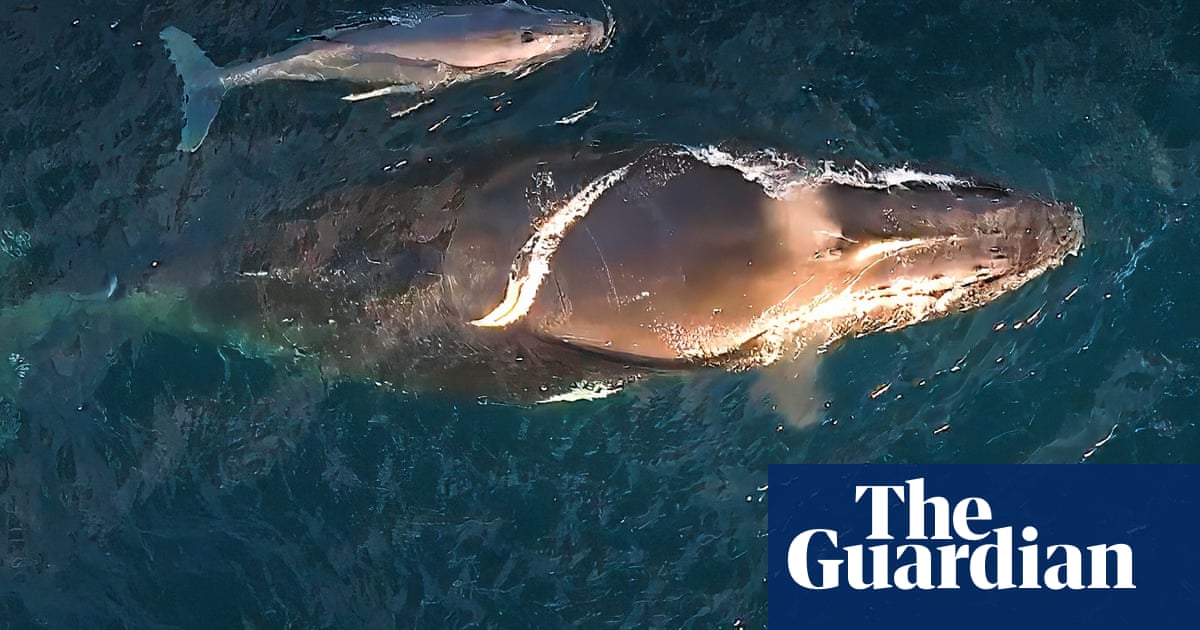Baby humpback whales are turning up in unexpected places.
In Australia, humpback mums were assumed to travel north to give birth in warmer, tropical waters – like the Great Barrier Reef – before migrating south with their calves along the “humpback highway” to feed in waters off Antarctica.
But new research, published inFrontiers in Marine Science, has flipped that script, recording newborns as far south as Tasmania, more than 1,500km from the assumed calving zone.
The study, which sought to understand if humpback whales gave birth beyond the previously accepted southern limit, uncovered more than 200 confirmed sightings of newborns across an area stretching from Queensland down to Tasmania and across to New Zealand’s South Island.
Humpback babies – about the size of a small car – came out tail first and floppy, said the study’s co-author and whale scientist Dr Vanessa Pirotta. They were identified by their folded-over dorsal fins, and were generally light grey or white.
Pirotta said more research was needed to establish why newborn calves were being observed so far south.
Sign up to get climate and environment editor Adam Morton’s Clear Air column as a free newsletter
“It may be the case that this has always been happening and we’ve just not documented it well or been paying attention,” she said.
“Or it may be something new is happening because waters are becoming warmer further south of those traditional tropical areas, which means that they’re more favourable for a humpback whale to have a calf.”
The study was prompted when whale-watching skipper Jane McPhee-Frew, who is also a co-author of the paper, spied a baby off the coast of Newcastle, 160km north of Sydney.
“It seemed out of place,” said McPhee-Frew, a researcher at the University of New South Wales. “The calf was tiny, obviously brand new. What were they doing here?”
Data from whale-watching operators, citizen scientists and government wildlife agencies revealed many more unusual observations, most dating after 2016.
Once they started investigating, reported sightings came in from further and further south, McPhee-Frew said, indicating humpback migration and breeding was much more complex than thought.
Sign up toClear Air Australia
Adam Morton brings you incisive analysis about the politics and impact of the climate crisis
after newsletter promotion
“Eventually, we just ran out of land to see them from,” she said. “So we don’t actually know where the limit is. But we had reports right to the bottom of Tassie, the southernmost points of Western Australia and to the South Island of New Zealand.”
Climate change has caused average sea surface temperatures in Australia to rise by 1.08C since 1900,according to the CSIRO, with the greatest warming occurring off south-east Australia and Tasmania.
Greater awareness and observation of newborn calves outside their expected zone was crucial to better protect those mothers and calves, Pirotta said.
There were a lot of navigational challenges along the humpback highway, she said. “You’ve got human impacts – ship strike risks, entanglement risks, predation from natural predators, tourists [and] boats.
“Research like this will help us with that better understanding of keeping a lookout, but also communicating to the public that they are in these areas.”
Angus Henderson, a whale researcher based at the University of Tasmania’s Institute for Marine and Antarctic Studies who was not involved in the study, said the unexpected sightings might also relate to the recovery of humpback whales since the end of industrial whaling in Australia.
But as human activities expanded alongside recovering whale populations, conflicts were becoming more common, he said. “Vessel traffic, particularly large ships, can kill whales,” he said. “Speed restrictions, and rerouting vessels away from whale habitat is the most effective way to minimise interactions and deaths.
“Entanglement in shark nets, ghost nets [and] discarded fishing gear … is another key threat to humpbacks along east coast breeding grounds, and with expansion in distribution this interaction is also expanded.”
